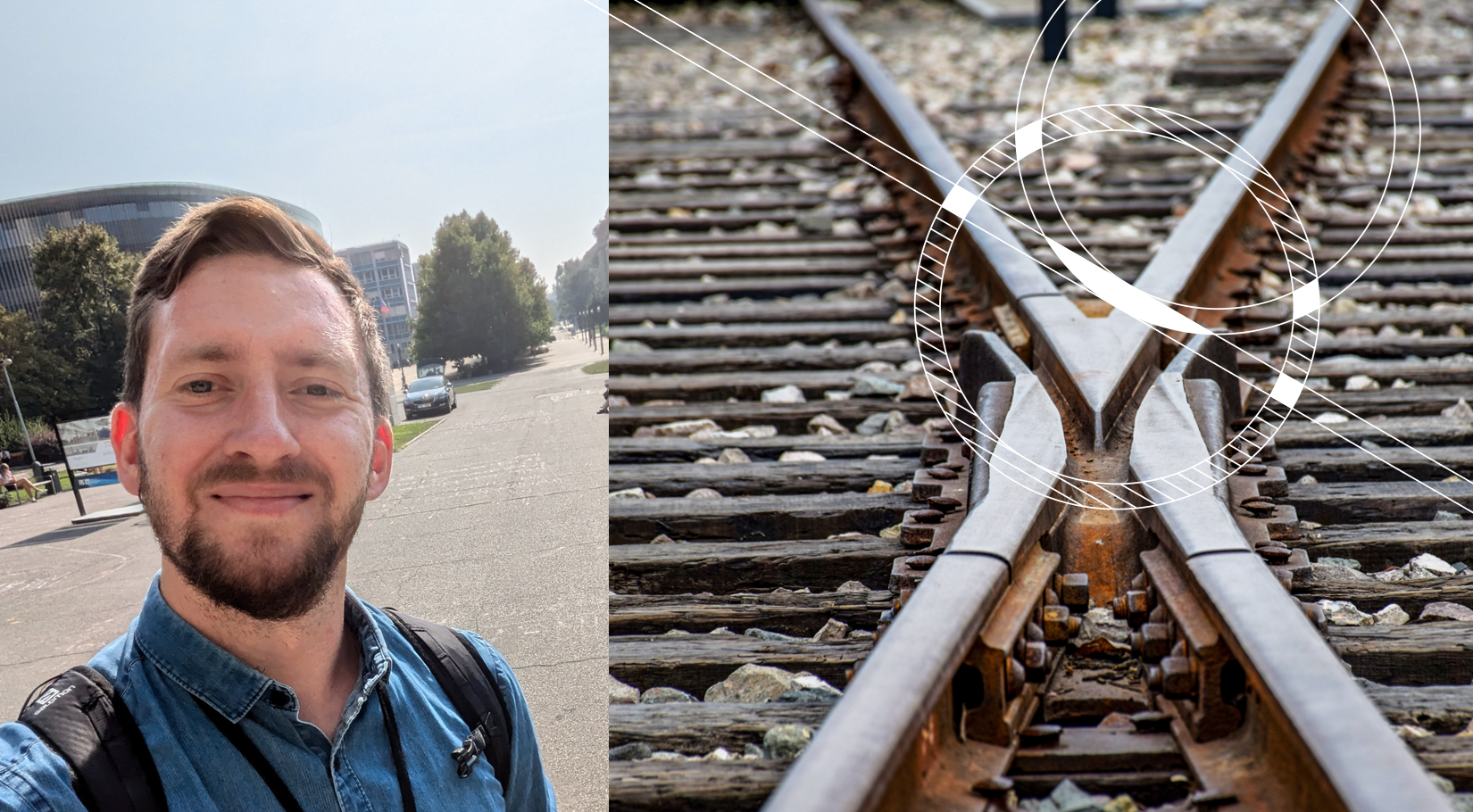“In the end, everyone who travels by train is affected”
With the help of a digital twin, replacing old switches can be more efficient, easier and cheaper. Our new PhD student Karl Norberg has smarter maintenance in mind, something that could benefit all Sweden’s train travelers.

Our PhD students are an important part of our research program and the work we do. So far, eleven PhD students have worked within the program, and this year we have the honor of introducing two more.
One of them is Karl Norberg, PhD student in 1D Digital twin for more efficient maintenance of switches – a project that addresses problems with switches that are too old and lead to disruptions in traffic. Replacing a switch is laborious and time-consuming, while many older ones still function well and should not be replaced too early. The project is working on a solution in the form of a digital twin that will tell you exactly when each switch needs to be replaced.
Karl Norberg has a background in general civil engineering at the Royal Institute of Technology (KTH), and moved in his master’s degree towards railway engineering. After graduation, he continued in the railway industry as a consultant, mainly in early investigations, design and technical investigations for new investment, reinvestment and maintenance projects.
– During my university studies, my general interest in the railway system was awakened, where the complexity of the system and how the direct interaction between track, vehicle and power supply creates unique conditions and issues. Above all, I want to develop and contribute to areas such as track technology, vehicle-track interaction and maintenance – this project checks all the boxes!
Why is it important to take a closer look at the maintenance of switches?
– Switches are needed to maintain and increase the capacity of the railway system, especially for the railway system we have in Sweden with shared track corridors, i.e. tracks served by different train types on the same infrastructure – local, regional and national passenger traffic but also freight traffic. At the same time, switches account for a large share of the investment and maintenance costs, and are one of the main sources of delays. Investigating the possibilities of optimized and earlier planned maintenance through the use of continuous condition assessment and prediction of the condition of switches is therefore important both to reduce life cycle costs and at the same time contribute to increased punctuality.
What do you hope your work will contribute to?
– Hopefully, the knowledge and discoveries that the project results in will enable more efficient, simpler and cheaper, simply smarter, maintenance, which will benefit infrastructure managers. Ultimately, it will also be able to affect all Swedes who travel by train, through increased punctuality and greater confidence in the railway system.
Here you can read more about the 1D Digital Twin project for more efficient maintenance of switches.